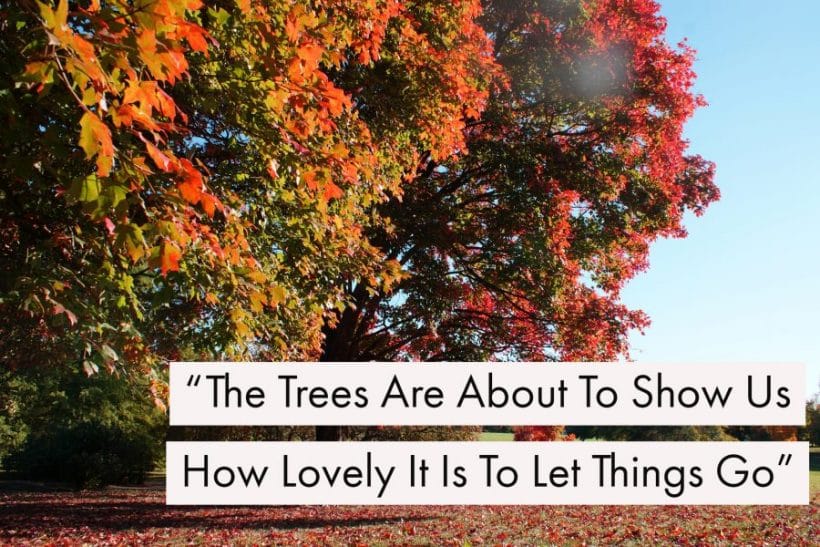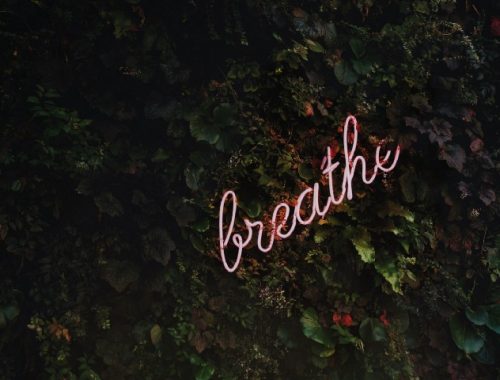
Learning From the Trees

I’ve read two versions of this. The other version:
The trees are about to show us how lovely it is to let the dead things go.
I saw that quote on an image in the Twitter feed of Erin Davis (author, voice artist, retired radio host) a few days ago.*
This quote seemed like the perfect writing prompt.
Change and renewal in our environment and within us
Fall is an amazing time for renewal. It begins with “back-to-school,” then a change in season. If you’re Jewish (like I am), it means the high holidays.
Jewish meaning
When I set out to write this post, I didn’t intend for it to be Jewy, but it’s what I relate to.
The high holidays start with the Jewish New Year (Rosh Hashana) and flows into Yom Kippur (“The Day of Atonement”). Some would say that this period ends with the lesser-celebrated Sukkot.
Like the start of the season, Rosh Hashanah is a holiday of celebration and introspection. Yom Kippur is the most solemn and introspective day in Judaism. It emphasizes personal responsibility for one’s actions.
Throughout the two holidays, it’s customary for Jews to admit the mistakes they’ve made over the year (traditional liturgy calls them “sins”); to ask for forgiveness, and vow to do better.
Jewish tradition teaches that to make it right with another person, you must approach that person directly and apologize. I think that the intention counts. You can visit them for a face-to-face, call, write an email or even write an apology that they will never see.
Best foot forward
I don’t know if it still is, but when I was a child, it was customary to buy new, semi-formal outfits to wear to synagogue. Jeans and t-shirts are not synagogue-appropriate. Suits, skirts and dresses are. In my opinion, dressing up is a sign of respect.
Furthermore, for those of us who do dress casually most days, it differentiates the space and time. It shows that these are special days. And uncomfortable shoes could be regarded as part of the experience of taking us out of the day-to-day and into something that feels different. (Not that I recommend uncomfortable shoes.)

Sukkot
While not really one of the high holidays, it begins four days after Yom Kippur. Sukkot is an agricultural festival that was initially considered a thanksgiving for the fruit harvest. Several years ago, I wrote an article called, “Tzimmes and Turkeys: A Canadian Jewish Thanksgiving” for a blog that later folded into the Forward’s Food section.
In this article, I shared that American Puritans modelled Thanksgiving after Sukkot as a harvest holiday and that American influence made Canadian Thanksgiving what it is today.
“Both Thanksgiving and Sukkot are festivals of giving thanks to God, the giver of the fall harvest.” You can read the whole article here. Every few years, I share it in September or October.

Renewal, regrowth
Like fall and the trees, the High Holidays are a time for renewal and new beginnings, rebirth and renewal. It’s a time for redemption. We can shed our metaphorical leaves to create space for something new and beautiful.
[Side note: In Judaism, the trees have a new year holiday of their own in February, celebrating their rebirth.]
To make space for something new, it helps to release the old, that which no longer serves. In my case, I got rid of the hair that no longer served. One of the results: I love not having to put it in a ponytail every time I eat.
Furthermore, trees are sturdy. They sway, but it takes a lot to knock ’em down.
New seasons, new years, new outfits, new haircut (me, last week), new possibilities.
Tell me: What does fall mean to you?

Following What Lights Me Up
You May Also Like

My Grandmother’s Candlesticks
April 13, 2020
Yoga Lesson: How You Exist In the Pose is Everything
May 9, 2019
